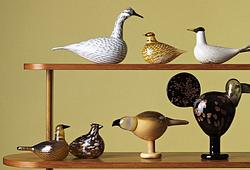Lena Cronqvist
A group of 6 sculptures
CONDITIONAL SALE, the lots with auction number 255-260 are first called out as separate lots and will then be offered as one lot with auction number 260A. A winning bid on auction number 260A requires a bid exceeding the total hammered price on auction number 255-260. Unsold lots will be priced at the reserves.
More information
Childhood. The moment when life is fresh and exciting and you learn something new everyday. Hours spent in make-believe worlds. Days of skipping-ropes endlessly swinging round and round during break times and afternoons. Lena Cronqvist tenderly captures this magical time with her sculptures. Her girls are brave, playful and strong-willed.
Since the 1970s Cronqvist has been one of Sweden’s most celebrated artists. With a unique artistic confidence, great intimacy and a tangible sensuality she has portrayed her experiences of growing up, being a mother and of family life. Her childhood continues to be a recurring theme, explored in depth by Cronqvist in both paintings and sculptures.
It was in the 1990s that Cronqvist began to explore sculpture as an art form in earnest and during the last decade she has stood out as one of the most interesting sculptors of our time. The early sculptures, some of which were created during times spent in New York with her writer husband Göran Tunström, were mostly small.
As the years passed her smaller terracotta figures have been replaced by increasingly large bronze sculptures, yet the subject matter has remained the same – young girls. But the girls are different. They are bigger, almost life-size, more ‘open’ and seem to have discovered new aspects to life. And because they are cast in bronze, a lasting material, there is now the possibility for them to play outside and live forever.
Cronqvist’s bronze sculptures can be found in many public collections. A group of five girls, similar to the present object, is located on Södermalmstorg in Stockholm, offering a slice of everyday joy to people passing a part of the city currently undergoing transformation. This spring the painted sculpture ‘Stående flicka med paraply’ was unveiled in Linköping’s ‘Seminarieträdgården’ park. Other public sculptures include: ‘Hand i hand’, installed in the park of the Rackstad Museum in Arvika, ‘Flicka i balja’ in Norre Katts park in Halmstad and ‘Flicka som räcker ut tungan’ on Brunkeberg square in Stockholm. In Karlstad ‘Två flickor’ is standing outside Värmlands Museum. It is also possible to view ‘Flicka i balja’ at the Sven-Harry Art Museum in Stockholm.
Artist
Lena Cronqvist is born and raised in Karlstad. Her interest for the arts came early in her life, and she spent the first year of her studies in England, near Bristol’s Art School. Upon her arrival back in Sweden, Cronqvist began a short-lived education at Konstfack, leaving to study painting at the Royal Academy of Fine Arts. When examining Lena Cronqvist's painting, it delves into "painting" in its more traditional sense. She is indeed a painter in the grand modern tradition, frequently turning to Edvard Munch and Francis Bacon’s art as inspirational sources. Yet she also had numerous art historical references and a deep love for the craft. Cronqvist excelled as a colourist, finding harmony in the most unusual colour combinations – few have managed to paint warmth and cold successfully at the same time. Her subject matter is often perceived as challenging and overly private by many. She often models herself for her art, posing in mundane situations imbued with a sharp psychological character. Her “Modonna-pictures” from the 1970s are a good example of this. She turns our gaze away from the conventional, notably in her portrayal and depiction of girls, which is fascinating. Cronqvist depicts these girls as ugly, simple, and altogether uncomfortable – a great contrast to how woman were normally portrayed in art. In more recent years, Lena Cronqvist has studied the effect of aging, using herself as a study. Moreover, Cronqvist is a very successful sculptor, and several of her works in bronze have been sold great sums in the auction world. She is also gifted in graphic productions, of which “Strindbergsmappen” is the most well-known. Among her most renowned works is "The Betrothal," a paraphrase of Jan van Eyck's symbol-laden painting "The Arnolfini Portrait." In Cronqvist's reinterpretation, artist and husband Göran Tunström are the main characters, with equally weighty symbolism but carrying entirely different meanings. Where van Eyck's painting features a loyal dog, Cronqvist replaces it with a cat—a symbol of independence.
Read more



























